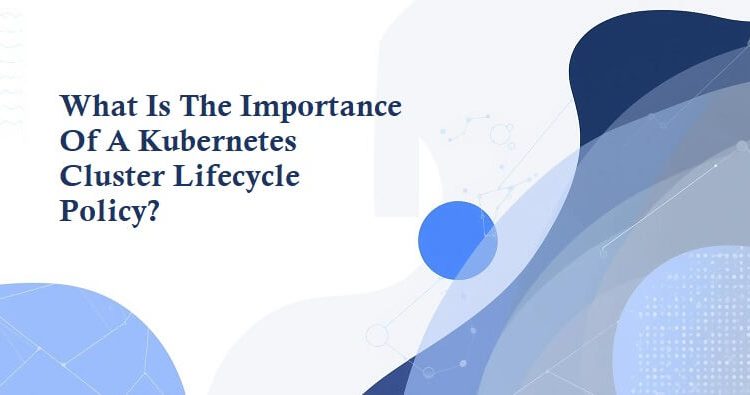What Is The Importance Of A Kubernetes Cluster Lifecycle Policy?

Kubernetes is the new generation of cloud-native applications. It provides scalability, automation, and efficiency. However, as clusters increase within environments, most organizations grapple with inconsistency, escalating costs, and security threats — which highlights what is the importance of a Kubernetes cluster lifecycle policy in maintaining control, security, and operational consistency across deployments.
The solution to such problems is setting up a Kubernetes cluster lifecycle policy. This is a policy that regulates the creation, management, and retirement of a cluster. Why is this critical to any business that is serious about running Kubernetes on a scale? Read on to understand.
Consistency from day one
In the absence of a lifecycle policy, clusters are frequently brought online on demand. Various teams name clusters differently, configure them differently, and grant different access control policies. The outcome is patchwork environments that are hard to manage and almost impossible to standardize.
A lifecycle policy essentially sets the foundation for Kubernetes cluster management, ensuring all clusters follow the same standards from the start. It defines the following:
- Policies on how the clusters are provisioned
- What they should be based on
- Which tools or templates are to be employed.
This makes all clusters have an equal foundation, which saves time and future stress.
Better cost control
Cluster sprawl has become a reality. Sometimes, teams can create new clusters and forget about the old ones that are not used, resulting in unwarranted costs on clouds. This cost creep can, over time, creep into budgets.
A lifecycle policy keeps expenditure under control by establishing clear guidelines on when clusters should be decommissioned. Or when development clusters should automatically decommission themselves. This way, organizations become more aware of what is running, who owns it, and why it exists.
Strengthening security
One of the largest uncontrollable cluster risks is security. In the absence of a regular policy, there is a risk that some clusters will operate old versions of Kubernetes, with weak access control, or a lack of important patches. These vulnerabilities highlight the need to understand how to improve website security and overall infrastructure protection to prevent such attack points from being exploited.
A lifecycle policy applies security on the ground. It may require upgrades in the version, a common authentication system, and auto-update patches. As global regulatory demands continue to become tighter, this is fundamental to meeting regulatory requirements.
Smooth scaling and upgrades
As your organization becomes larger, the necessity of scaling clusters and updating them on a regular basis increases. However, scaling without a strategy causes performance bottlenecks during upgrades or outages.
A lifecycle policy defines:
- When and how clusters are going to scale
- Who grants expansions
- What the upgrade process will look like.
The team will have a clear playbook, reducing risk and maximizing agility.
Greater monitoring and accountability
You can assign ownership to every cluster. As a result, you will be aware of which team or department is accountable for monitoring, recording, and addressing issues. This prevents the conventional issue of ‘’nobody’s cluster’’ whenever something fails.
When the monitoring and logging guidelines are standardized, the process of troubleshooting is quicker, and clusters can still be seen throughout the organization.
The bottom line
A Kubernetes cluster lifecycle policy eliminates complexity. Such a policy will make Kubernetes a secure and stable backbone of your applications by ensuring a steady provisioning process, cost control, security, scalability planning, and accountability.
